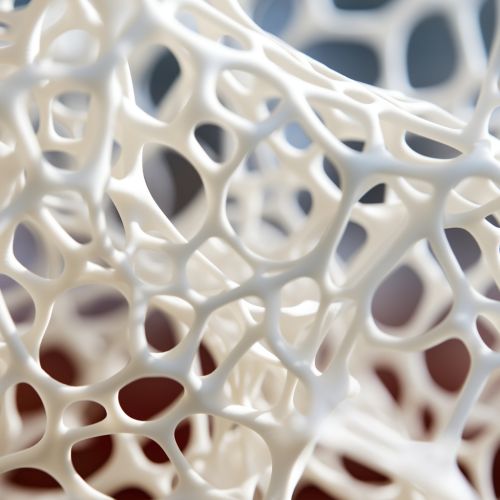Advances in Biopolymer-Based Drug Delivery Systems
Introduction
Biopolymers are polymeric substances that are produced by living organisms. They have gained significant attention in the field of drug delivery systems due to their biocompatibility, biodegradability, and non-toxicity. The advances in biopolymer-based drug delivery systems have led to the development of novel approaches for the treatment of various diseases.


Biopolymers in Drug Delivery
Biopolymers have been extensively used in the development of drug delivery systems due to their unique properties. They can be modified chemically and physically to control the release of drugs, improve the stability of drugs, and target specific sites in the body. The use of biopolymers in drug delivery systems has been shown to improve the therapeutic efficacy of drugs and reduce their side effects.
Types of Biopolymers
There are several types of biopolymers that are used in drug delivery systems. These include proteins, polysaccharides, and nucleic acids.
- Proteins: Proteins such as collagen, gelatin, and albumin have been used in the development of drug delivery systems. They have excellent biocompatibility and can be easily modified to control drug release.
- Polysaccharides: Polysaccharides such as chitosan, alginate, and hyaluronic acid are widely used in drug delivery systems. They have good biocompatibility and can form hydrogels, which are useful for controlled drug release.
- Nucleic Acids: Nucleic acids such as DNA and RNA have been used in the development of gene delivery systems. They can be easily modified and have the ability to carry genetic information.
Advances in Biopolymer-Based Drug Delivery Systems
The advances in biopolymer-based drug delivery systems have led to the development of various novel approaches for drug delivery. These include nanotechnology-based approaches, stimuli-responsive systems, and targeted drug delivery systems.
Nanotechnology-Based Approaches
Nanotechnology-based approaches have been widely used in the development of biopolymer-based drug delivery systems. These approaches involve the use of nanoparticles, nanofibers, and nanogels for drug delivery.
- Nanoparticles: Biopolymer-based nanoparticles have been extensively used for drug delivery. They can encapsulate drugs and release them in a controlled manner. They can also target specific sites in the body, improving the therapeutic efficacy of drugs.
- Nanofibers: Biopolymer-based nanofibers have been used for drug delivery. They can be loaded with drugs and used for controlled drug release. They can also be used for tissue engineering applications.
- Nanogels: Biopolymer-based nanogels have been used for drug delivery. They can encapsulate drugs and release them in response to specific stimuli.
Stimuli-Responsive Systems
Stimuli-responsive systems are a type of drug delivery system that release drugs in response to specific stimuli. These stimuli can be internal, such as pH and temperature, or external, such as light and magnetic field. Biopolymers can be modified to make them responsive to specific stimuli, allowing for controlled drug release.
Targeted Drug Delivery Systems
Targeted drug delivery systems are designed to deliver drugs to specific sites in the body. This can improve the therapeutic efficacy of drugs and reduce their side effects. Biopolymers can be modified with targeting ligands to make them target specific cells or tissues.
Future Perspectives
The advances in biopolymer-based drug delivery systems have opened up new avenues for the treatment of various diseases. However, there are still several challenges that need to be addressed. These include the development of biopolymers with controlled properties, the design of drug delivery systems with high loading capacity and controlled drug release, and the development of targeted drug delivery systems with high specificity.
Despite these challenges, the future of biopolymer-based drug delivery systems looks promising. With the advancements in nanotechnology and materials science, it is expected that more efficient and effective biopolymer-based drug delivery systems will be developed in the future.
